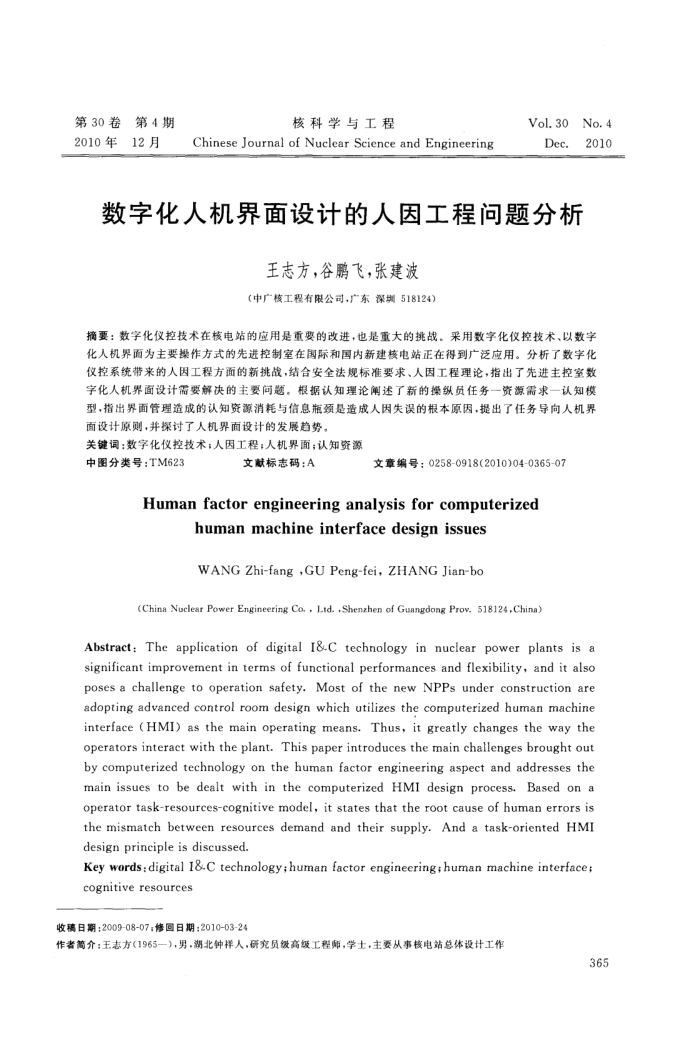您当前的位置:首页>论文资料>数字化人机界面设计的人因工程问题分析
内容简介
 第30卷 2010年
第30卷 2010年第4期 12月
核科学与工程
Chinese Journal of Nuclear Science and Engineering
Vol.30No.4
Dec.
2010
数字化人机界面设计的人因工程问题分析
王志方,谷鹏飞,张建波(中广核工程有限公司,广东深圳518124)
摘要:数字化仪控技术在核电站的应用是重要的改进,也是重大的挑战。采用数字化仪控技术、以数字化人机界面为主要操作方式的先进控制室在国际和国内新建核电站正在得到广泛应用。分析了数字化仪控系统带来的人因工程方面的新挑战,结合安全法规标准要求、人因工程理论,指出了先进主控室数字化人机界面设计需要解决的主要间题。根据认知理论阐述了新的操纵员任务一资源需求一认知模型,指出界面管理造成的认知资源消耗与信息瓶颈是造成人因失误的根本原因,提出了任务导向人机界面设计原则,并探讨了人机界面设计的发展趋势。
关键词:数字化仪控技术;人因工程;人机界面;认知资源
中图分类号:TM623
文献标志码:A
文章编号:0258-0918(2010)04-0365-07
Human factor engineering analysis for computerized
humanmachineinterfacedesignissues WANGZhi-fang,GU Peng-fei,ZHANG Jian-bo
(China Nuclear Power Engineering Co. , Ltd. ,Shenzhen of Guangdong Prov, 518124, China)
Abstract: The application of digital I&.C technology in nuclear power plants is a significant improvement in terms of functional performances and flexibility, and it also poses a challenge to operation safety. Most of the new NPPs under construction are adopting advanced control room design which utilizes the computerized human machine interface (HMI) as the main operating means. Thus, it greatly changes the way the operators interact with the plant. This paper introduces the main challenges brought out by computerized technology on the human factor engineering aspect and addresses the main issues to be dealt with in the computerized HMI design process. Based on a operator task-resources-cognitive model, it states that the root cause of human errors is the mismatch between resources demand and their supply. And a task-oriented HMI design principle is discussed.
Key words:digital I&C technology;human factor engineering;human machine interface; cognitive resources
收稿日期:2009-08-07;修回日期:2010-03-24
作者筒介:王志方(1965一),男,期北钟样人,研究员级高级工程师,学士,主要从事核电站总体设计工作
365